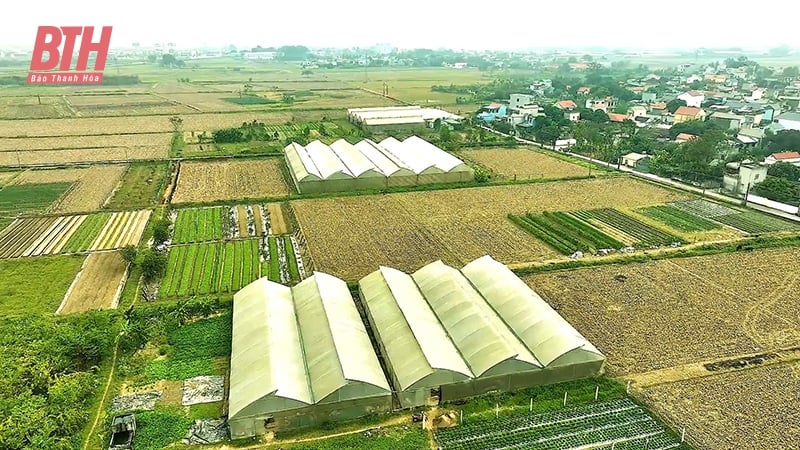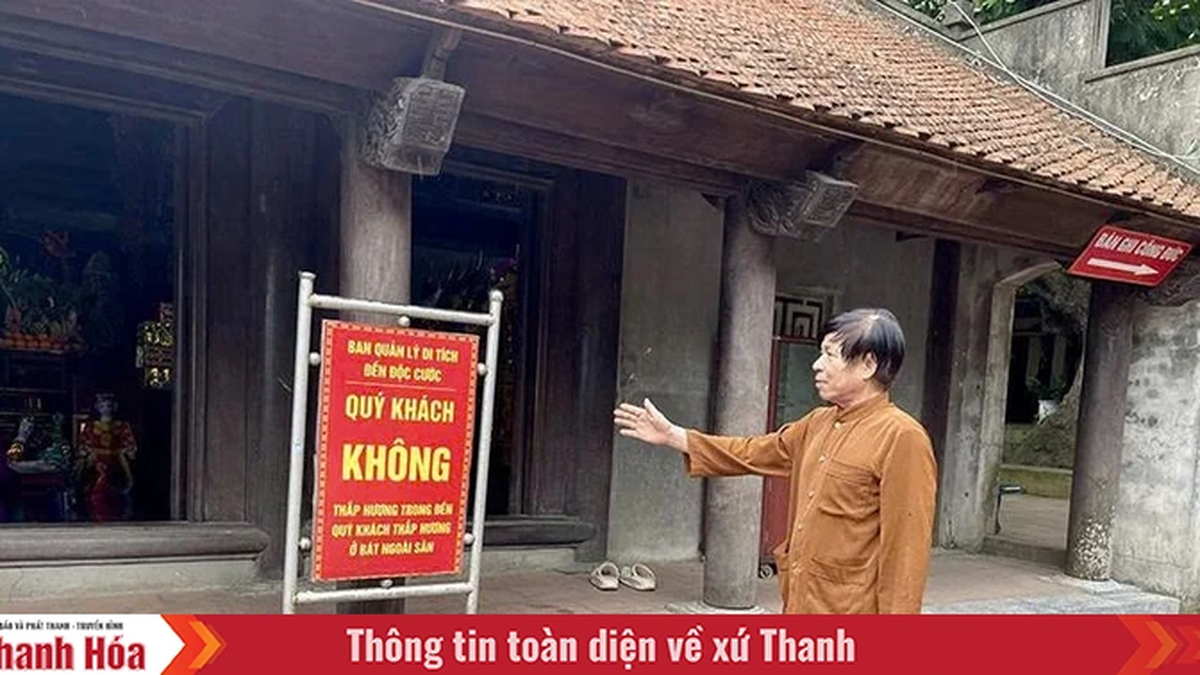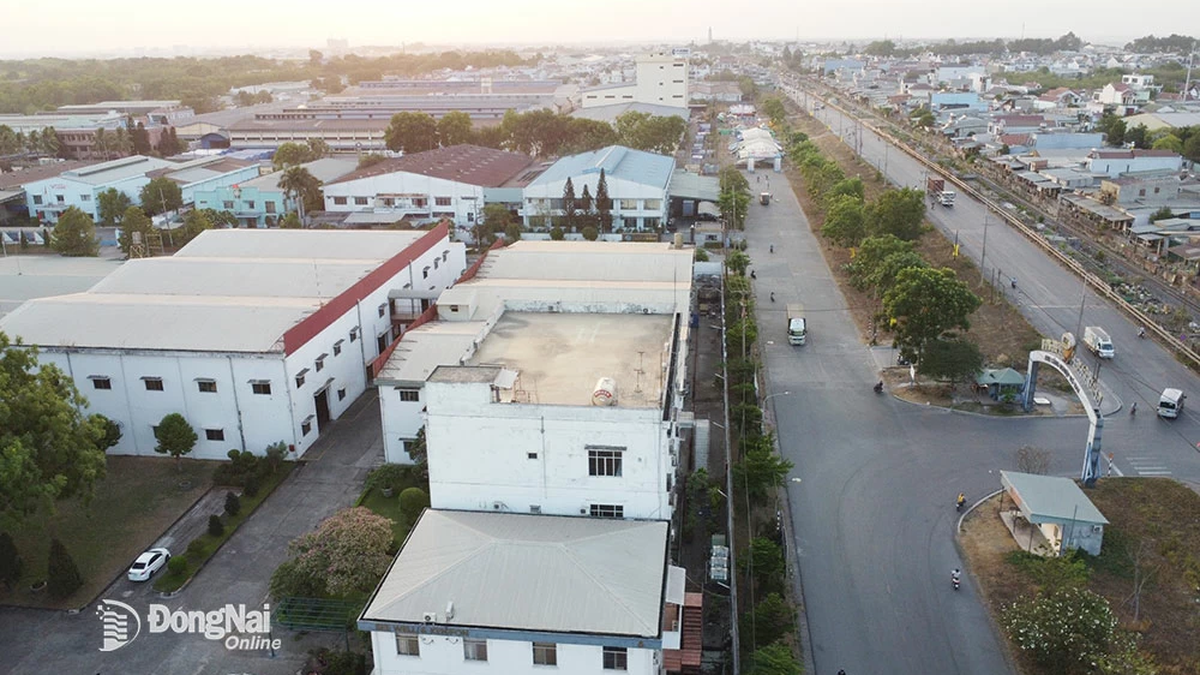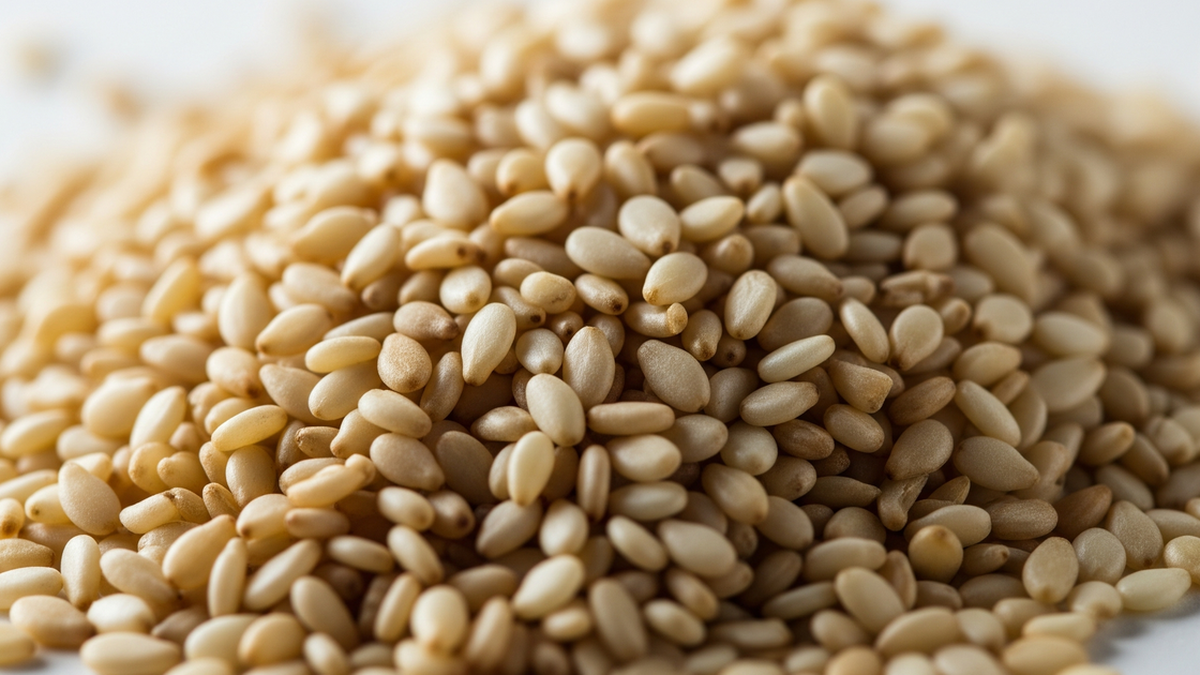High-tech agricultural model in Hoang Hop commune (Hoang Hoa).
“Multi-purpose land use” or “multi-purpose land use” is an unpopular concept that many people do not understand. The reporter had an interview with Lawyer Vu Van Tra, Son Tra Law Firm LLC, Thanh Hoa Provincial Bar Association, to clarify these regulations.
According to Lawyer Vu Van Tra, "multi-purpose land use" is specifically regulated in Article 218 of the 2024 Land Law and is guided in detail in Article 99 of Decree 102/2024/ND-CP.
"Multi-purpose land use is understood as the use of a part of the land area of the main land use purpose for another purpose. In which, the main land use purpose is the purpose of the land plot that the State allocates land, leases land, recognizes land use rights, and is using the land stably and is eligible for a certificate", Lawyer Tra explained.
The use of land for multiple purposes is only applied within the scope of 7 land groups permitted by law to be combined, including: Agricultural land used in combination with commercial, service, livestock, and medicinal plant growing purposes; Land used for public purposes combined with commercial and service purposes; Land for construction of public works used in combination with commercial and service purposes; Residential land used in combination with agricultural, commercial, service, and public works with business purposes; Land with water surface used in combination with multi-purposes according to the provisions of Articles 188, 189 and 215 of the 2024 Land Law; Religious land and belief land used in combination with commercial and service purposes; Land specified in Clause 2 and Clause 3, Article 9 of the 2024 Land Law is used for a combination of agricultural purposes, construction of postal, telecommunications, technology, information, outdoor advertising, and solar power infrastructure.
This new regulation creates conditions for land users to be more flexible in exploiting their assets, helping to optimize land use, contributing to local economic development.
Mr. Le Ngoc Nam, in Hoang Dat commune (Hoang Hoa), is the person who has accumulated and concentrated an area of agricultural land to develop a large-scale agricultural model, applying high technology since before 2020. With the regulation allowing the use of agricultural land in a multi-purpose direction, Mr. Nam believes that it will create favorable conditions for development.
“With the new regulations, our garden area can take advantage of the existing land area, both producing main crops in greenhouses and developing into gardens that attract visitors to visit, take photos, and have real-life experiences,” Nam shared.
Mr. Do Van Tung, Tho Lam commune (Tho Xuan), also highly appreciated this new regulation: “Previously, agricultural land could only be used to grow rice and fruit trees. If you wanted to use the land for other purposes, you had to go through procedures to change the purpose of use. The process of carrying out the above procedures takes a lot of time and costs. With the new regulations on multi-purpose land, many opportunities are opened up for businesses, organizations and people to access and exploit land resources, develop suitable and environmentally friendly services, without fear of violating land use regulations while still taking advantage of having more income on the same land area.”
Although the legalization of regulations on multi-purpose land use is one of the important new points of the 2024 Land Law, encouraging creativity and increasing land use efficiency. However, allowing multi-purpose land use also poses some challenges and complexities in management issues.
Lawyer Vu Van Tra said that the use of land for multiple purposes must comply with relevant legal regulations to ensure legality and avoid violations. According to Clause 2, Article 99 of Decree 102/2024/ND-CP, the scope and conditions for the use of land for multiple purposes are stipulated as follows: Land use for multiple purposes is not subject to the change of land use purpose specified in Article 121 of the 2024 Land Law; The area of land used for multiple purposes must not exceed 50% of the area of land used for the main purpose, except for the area of residential land used for multiple purposes. Construction works on agricultural land for the use of land for multiple purposes must have appropriate scale and nature, and be easy to dismantle. The area of land for construction works for combined purposes on rice-growing land and forestry land shall comply with the provisions of the decree detailing rice-growing land and forestry laws. Land with water surface must not be filled to change the flow, surface area of water, and depth of water layer. Construction and renovation of works for combined purposes must comply with the provisions of the law on construction and other relevant laws. The duration of land use for combined purposes must not exceed the remaining duration of land use of the main purpose.
In the case of public service units using land to build public works combined with trade and services, they must switch to land lease with annual land rental payment for that combined area. In cases of land use combined with trade and service purposes, a land use plan must be prepared and submitted to the competent authority for approval. The content of the plan, documents, order and procedures for approving the multi-purpose land use plan are stipulated in Clause 3 and Clause 4, Article 99 of Decree 102/2024/ND-CP.
"The new regulation on multi-purpose land use is a significant step forward in land policy reform, contributing to optimizing land use and bringing economic benefits to people. However, to ensure proper land use, people need to carefully study and comply with the conditions set out in the law," emphasized Lawyer Vu Van Tra.
Viet Huong
Source: https://baothanhhoa.vn/hieu-dung-ve-su-dung-dat-ket-hop-da-muc-dich-249577.htm





















































![[Maritime News] More than 80% of global container shipping capacity is in the hands of MSC and major shipping alliances](https://vphoto.vietnam.vn/thumb/402x226/vietnam/resource/IMAGE/2025/7/16/6b4d586c984b4cbf8c5680352b9eaeb0)












































Comment (0)